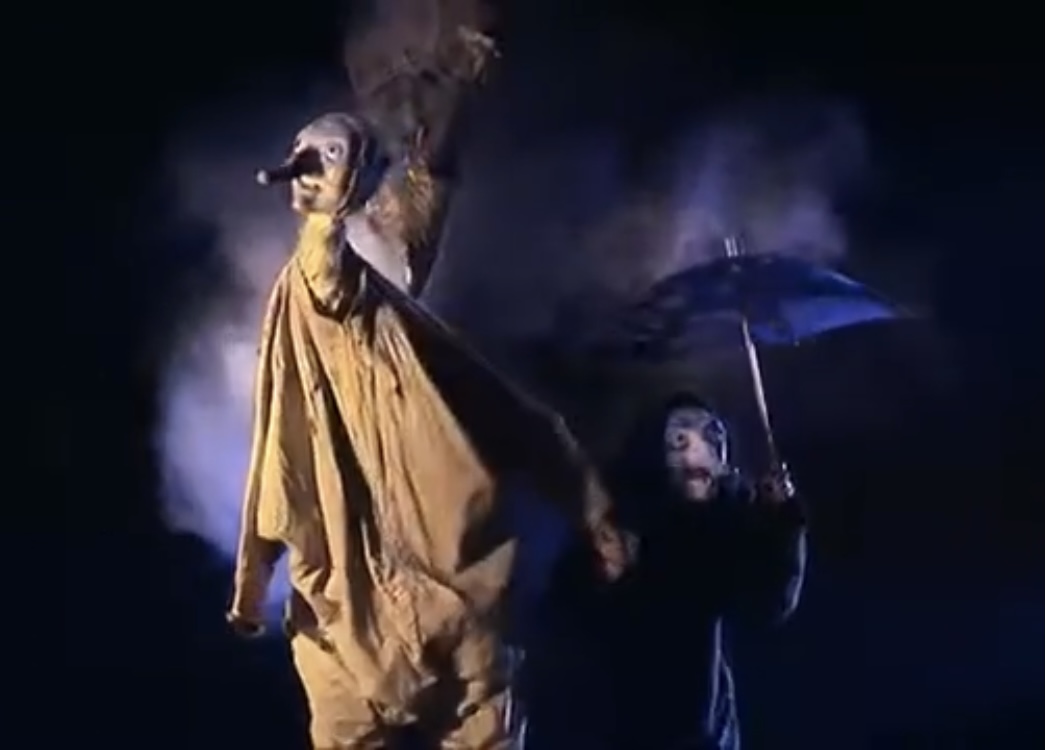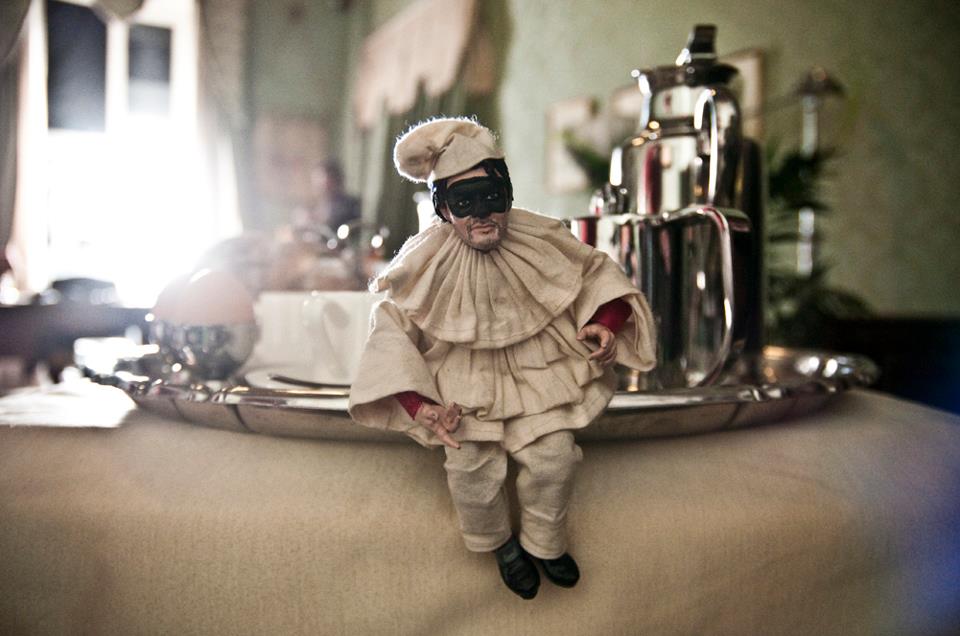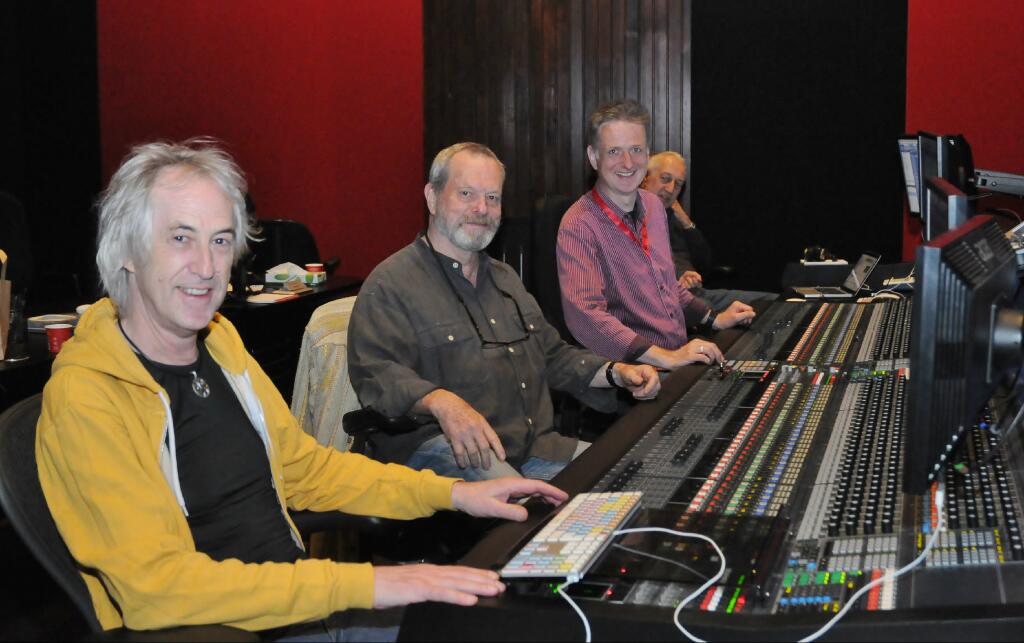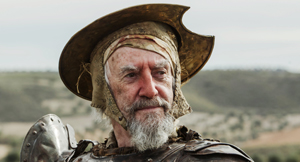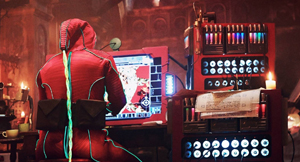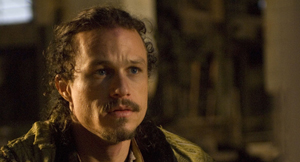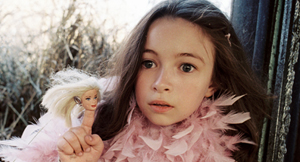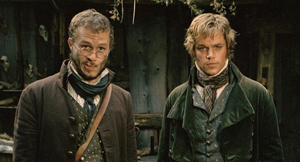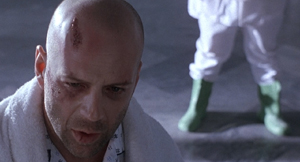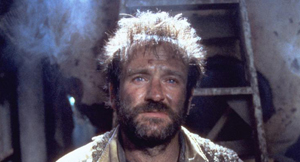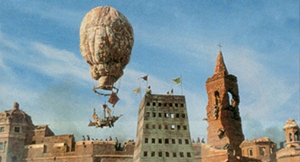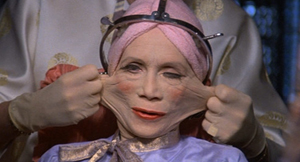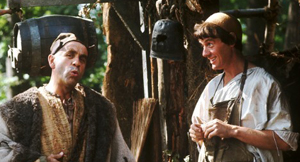Terry Gilliam, one of cinema’s few uncompromising iconoclasts, has divided the critics throughout his career. He is regularly admired for his dynamic mise-en-scene, yet is often dismissed for his indulgences. Gilliam’s trademarks are plentiful,…. he has a penchant for wide-angle lenses – these distort the faces of his characters in close-ups, but they also pack a huge amount of background detail into his shots. His scripts are full of personal themes – his love of history, his championing of the imagination, his dislike of bureaucracy, and his distrust of doctors and science… and there is a cage in every movie. There are in fact many autobiographical elements to be found in his films, and he often adds plenty of cheap gags into the mixture.
For a director whose reputation lies in his visual imagination, Gilliam has enticed a great number of top-notch performances from actors Oliver Reed, Michael Palin, Robert de Niro, Jeff Bridges, Robin Williams, Bruce Willis, Brad Pitt, Johnny Depp, and many others. Gilliam’s own cinema hero is Fellini, whom he met in Rome while filming The Adventures of Baron Munchausen. Like Fellini, Gilliam is determined to stamp his own imagination and personal obsessions onto the silver screen.
Terrence Vance Gilliam was born in Minnesota on 22 November 1940. After eleven early years of a Huckleberry Finn/Tom Sawyer-type childhood (his description), his family moved to LA. There he was a witness to the Hollywood system, from the fringes. As a kid, his drawing and cartooning skills developed. After graduating from school where he apparently excelled at pole vaulting, Gilliam went to the Occidental College, studying Physics, which he later changed to Politics. In his last year at college, Gilliam sent copies of his college magazine work to comic maestro Harvey Kurtzman in New York.
Kurtzman was running a magazine called Help!, and was impressed. When writer Charles Alverson left the magazine, a vacancy arose, and Gilliam took a job there. He spent the next three years there – writing, designing and drawing – but being paid very little. During the time at Help!, he met John Cleese, who was roped in to star in a photo-story spoof – as a guilt-ridden man involved in an affair with a small doll. Gilliam’s time at Help! terminated when national service loomed. He joined the National Guard for a few months, after which Gilliam did not return to Help!. Instead, he spent some time on welfare, and then decided to leave America temporarily. Gilliam spent six months touring Europe, hitchhiking and on motorbike. For part of the time, he worked as a cartoonist in Paris. Gilliam returned to America, and first went to New York, staying in Harvey Kurtzman’s attic. He then moved back home in Los Angeles, and found a job in an advertising agency.
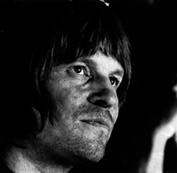
“I got it because I was stylish”, says Terry, “They hired me because of my hair. One day I went to a girl’s place and took with me a cover of Beatles for Sale and said, ‘Come on, let’s just do it. Pull it all down and cut bangs like The Beatles.'” “This hairstyle had become a threat to the structure of the entire society. America then had a real problem about conformity.” Gilliam was stopped by the police while driving a Hillman Minx. He was frisked, “because they knew who I was – I was an out-of-work musician, living off some middle-class man’s daughter, peddling drugs.” That Gilliam was actually working in advertising, making twice the money of the policemen, did not endear him to them. Whilst working at the advertising agency, Gilliam was living with a British journalist Glenys Roberts, who recalls, “We had this little glasshouse together in LA. He worked so hard for such little money. I remember he did a cartoon strip for a surfing magazine, for nothing really, yet he stayed up five nights running to finish it. We couldn’t afford tables, so he took all the doors off, laid them on bricks to make trestle tables. He walked up and down all night working on storyboards for his strip. His enthusisam was incredible. And his work rate amazing. I never personally liked his sense of humour, but I could see his work was brilliant and original.”
On their way to a party, they encountered a demonstration against LBJ. It was peaceful, and the protestors were giving flowers to the police there. “Suddenly police on Harley Davidsons smashed into the crowds, and people started shouting, ‘You Bastards’, and the whole crowd just went up. I remember being picked up by my hair, being smashed to the ground and I was out for a moment. By the time I got to my feet, there were bodies all over the place, shoes, handbags. The police were rushing pell-mell after the crowd, hitting people in wheelchairs – it was my first experience of hell on earth. I felt either I become a full time activist or I get out of here and go back to Europe, be a cartoonist and do all the things I’m much better at.” Gilliam was fired from his job at the advertising agency just before he was able to resign. His disenfranchisement with the US led him to abandon his homeland and pursue life in England.
Later in 1967, Terry and Glenys moved to London, and got a flat together in Fulham. He became art editor of a magazine called the Londoner, and Gilliam met many like-minded writers and performers “It seemed impossible to get anywhere with magazines”, says Gilliam, ” so I called John Cleese and asked him how I could get into television. He suggested calling Humphrey Barclay, and eventually, I got to him. He was only mildly interested by my written sketches, but when I mentioned that I was a cartoonist he was interested. Somehow he found room for one or two things I had written in Do Not Adjust Your Set” [a TV show featuring Michael Palin, Terry Jones and Eric Idle]. On this show, a black and white Gilliam animation about elephants was featured. At the time Gilliam became a cartoonist for another show We Have Ways of Making You Laugh, featuring Frank Muir.
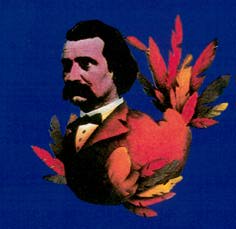
Barry Took, a British producer and broadcaster, was at the time selecting comedians for a new television show. It was at Eric Idle’s urging that Gilliam be included. That television show became Monty Python’s Flying Circus, and Gilliam became the resident cartoonist. Gilliam was responsible for the whole visual style of the Python TV shows, and later either co-directed or designed the Python films. “I knew the techniques of animation in theory, having read a book or two, but I had never done anything in practice. The cutout technique I had seen years earlier in New York. It was fast and crude. If I had been given the money and time, I would probably tried to do a Walt Disney style. I think I was good with sound effects and the timing. The noises are fifty percent of the effect. I’d literally work day and night when we were doing a series. The BBC had an excellent rostrum camera set-up. I’d be going seven days a week, usually with two all-nighters, churning out artwork, then I’d go down there to play with it under a camera.” Gilliam can also occasionally be seen as a performer, most notably as Cardinal Fang in the Spanish Inquisition sketch (pictured). It was during the TV shows that Gilliam met his wife, Maggie Weston, who was in charge of make up for the TV shows. Weston has subsequently contributed to Gilliam’s films.

Gilliam then gained valuable movie experience with the first Python film outings: And Now for Something Completely Different and Monty Python and the Holy Grail – the latter he co-directed with Terry Jones. This led to his first solo outing as director – Jabberwocky, a medieval fantasy starring Michael Palin. Later, Gilliam contributed to the Python films The Life of Brian and The Meaning of Life, but left Jones to direct on his own. In the 1980s, Gilliam created four hugely personal films: Time Bandits (1981), The Crimson Permanent Assurance (1983), Brazil (1985) and The Adventures of Baron Munchausen (1989). Gilliam created Time Bandits as a film all ages would enjoy. In this he succeeded – his picaresque tale of six time-travelling thieves was a hit across the States. He follows it with an outrageous short film The Crimson Permanent Assurance, a live action cartoon – Gilliam in unadulterated form, which documented the adventures of a band of piratical accountancy clerks. It is a hugely enjoyable folly, which was to be featured in the middle of the film, but was wisely moved to the start. This was Gilliam’s contribution to the final Python movie, Monty Python’s The Meaning of Life. This is an uneven film, but contains some of the best work that the Pythons ever did, including Every Sperm is Sacred.
The success of Time Bandits gave him leverage to make his next film, Brazil, about a dreaming clerk’s hopeless battle against a totalitarian state. Brazil was not a box-office smash, but is seen by many as his key work… a dense script, fascinating themes, tremendous design and dark humour. That America saw Brazil in Gilliam’s intended form was thanks to his guerrilla tactics against Universal head Sid Sheinberg, who wanted to distort Gilliam’s brave vision for financial reasons. Following the very public battle over Brazil, Gilliam became perceived as a “difficult” director, but because of the film’s astonishing visuals, he still remained the director who could deliver an expensive-looking film with a small budget. After Brazil was completed, later in 1985 Gilliam helped by storyboarding the video for Kate Bush’s single Cloudbusting.
Terry’s next project was the hugely underrated The Adventures of Baron Munchausen. This film charts the adventures of an aged man who, through the persistence of a young girl, Sally, rounds up his superhuman friends from a variety of unlikely places in an attempt to save a town from both its bureaucratic leader and a violent outside enemy. The making of Munchausen became a nightmare, as its initial budget became woefully inadequate. A book which followed the movie pointed the finger for its overspending at others; not Gilliam.
After Munchausen, Gilliam worked for a few months developing Watchmen, but that project came to nought. Many to this day still wonder what might have resulted from that project. However, Gilliam soon found a script called The Fisher King that had been sent to him from the States along with The Addams Family, which he was supposed to be interested in… The Fisher King (1991) was seen by Hollywood as Gilliam’s first commercial film. He gained excellent performances from Jeff Bridges, Robin Williams, Amanda Plummer and an Oscar-winning Mercedes Ruehl, and eschewed complex effects. Millions adored the movie, which charted the fall and subsequent redemption of a NYC talk show host. Gilliam throughout remained loyal to LaGravenese’s screenplay. After the release of The Fisher King, Terry Gilliam’s prospects looked much better. Gilliam said just before the release of The Fisher King, “They love it in Hollywood and the studio’s behind it. I’m now a good guy. Until Munchausen, the storyline on me was the director who can do any expensive-looking film cheaply. Then suddenly I was the megalomaniac. Now I’m the director who can work with stars. It’s all madness!” The Fisher King was successful at the box office.

So for Gilliam, his reputation now rebuilt thanks to The Fisher King, the offers came in, and he began developing his next movie The Defective Detective, with Richard LaGravenese. The theme is of a burned-out New York cop who ends up inside a child’s fantasy world. Not just any fantasy world, of course, but maybe more original, outrageous and weird than anything previously seen on celluloid. However, Gilliam entered “Development Hell”. By the end of 1994, Gilliam had still not got this project off the ground, since Paramount put the project into “development”, but refused to believe that Gilliam could make it for $25m. Gilliam said he “begged, grovelled and humiliated” himself, but to no avail. Gilliam was unable to get any of his projects off the ground. At the time he said, “I’d like to get a couple more films done before I die. The joke is that I did The Fisher King with an eye to suddenly changing my rhythm and trying to make films quicker and more often. I thought ‘Now I’ve proved to them that I can work in Hollywood, they trust me and we’ll be able to get another project off very quickly.’ It hasn’t worked out that way at all.”
While waiting for his next project to take off, Gilliam kept busy. He presented a BBC documentary called The Last Machine, which traced the very early pioneers of film. He was involved with and publicised the CD-ROM Monty Python’s Complete Waste of Time – a game based around Gilliam’s graphics and which featured sketches from the Python TV shows. Also, he directed a TV ad for Nike. Gilliam toyed with many other projects in the mid-90’s, including A Tale of Two Cities and The Hunchback of Notre Dame. Unable to get one of his own movie projects off the ground, he decided to take on the project Twelve Monkeys, but it was not until 1996 that that film was released. Starring Bruce Willis and Brad Pitt, it was a haunting time travel melodrama that, like Fisher King, topped the box office charts on its release. After 12 Monkeys, Gilliam again gave the Defective Detective script a reworking, but was snapped up to make Fear and Loathing in Las Vegas when Alex Cox was removed from the project.
Gilliam attacked the script and upped the budget, and made one of the ugliest films ever! “We want to apologise in advance for whatever it is that we’ve done,” smirked Gilliam as he transferred the drug-induced book onto celluloid. Widely condemned (where it wasn’t ignored), it gave Gilliam an opportunity to chart an American era that he had abandoned. Dangerous, nasty, yet hilarious, it was an important work.
Now approaching his sixties, he lives in a huge old house near Highgate cemetery. He and Maggie have three children: Holly, Amy and Harry. During the making of Twelve Monkeys, Gilliam, said “I really have no concept of time, so that’s probably one of the reasons I do these kind of films; I’m trying to recreate another time and pretend to be in that period for a brief moment. History has always been a great fascination for me. I think that’s why I live in Europe. You can’t get away from history, it surrounds you all the time. Whereas America has managed to banish history. One of the great things about living here [in Europe] is that you’re very much a part of a continuum that you can’t escape. I find it a wiser way to live.” His taste for movie-making remains undimmed. His next project is The Man Who Killed Don Quixote, and starring Johnny Depp, Vanessa Paradis, Jean Rochefort and Rossy de Palma, filmed in London and Spain. Expect it in 2001.


